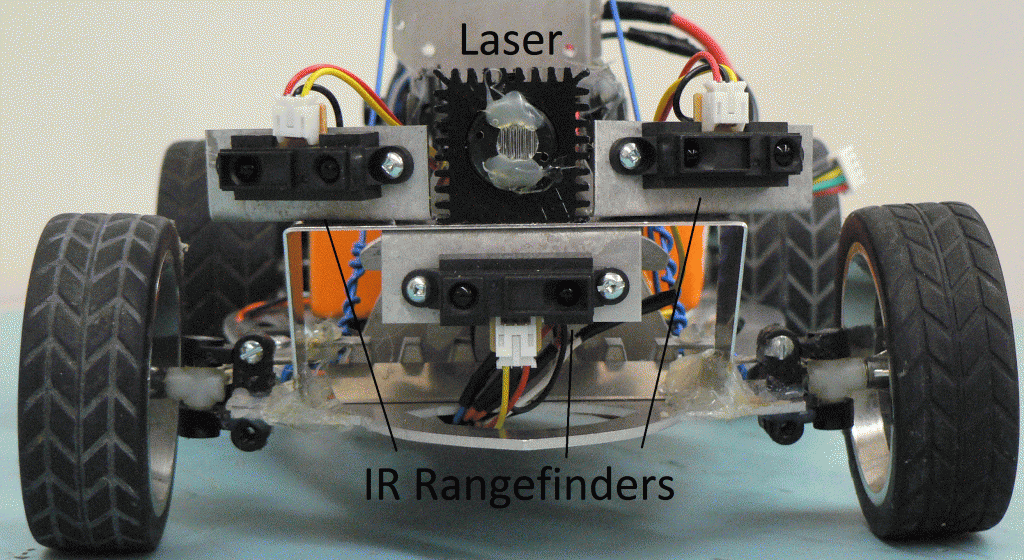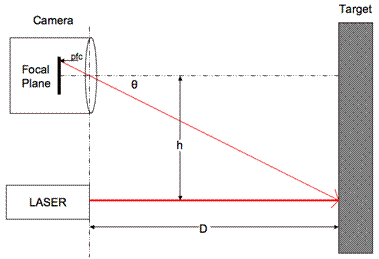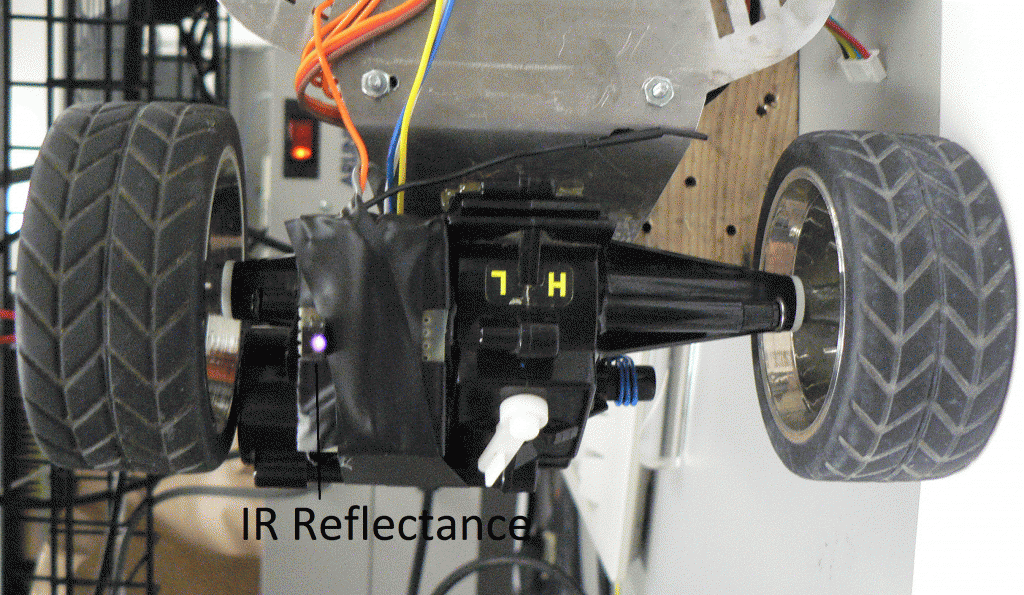Our robot incorporates three main sensor systems: the laser / webcam triangulation sensor, the IR rangefinders and the IR reflectance sensor.
The primary sensor consists of a class 3 green laser mounted on the front of the robot. The reason for choosing a green laser is because green laser is easier to detect as the green color space of the surrounding is relatively less intense compare to the red color space. We chose a class 3 laser because it’s intensity is higher and it makes the image processing easier to filter out the background. The laser is fitted with a lens which changes it from a dot to a horizontal line stretching across the entire forward arc of the robot. By converting a dot laser to a line laser, the entire front view can be processed. More data is returned as to generate wiser steering logic on the robot.
There is also a wireless webcam mounted on a tower at the centre of the robot, which can see the entire area the laser shines.
The camera data is transmitted to a laptop for interpretation using radio wave. The program uses triangulation to determine the distance to objects the laser reflects. The camera was placed much higher than the laser in order to increase the height change over distance detected by the camera.
After the camera data is processed, the computer will send out a 8-bit character to the microcontroller using Xbee. The microcontroller will search a look-up table to determine what the 8-bit character represent. Then control the car by adjusting the servo and DC motor.
There are 8 IR rangefinders mounted on the robot. Three are mounted near the laser on the front end of the robot. These cover directly ahead and slightly right and left arc. Their primary function is collision avoidance. Four more are mounted on the central tower. Two cover the outside edges of the right and left arc. The other two ( mounted higher) monitor the distance to each wall. This is used to determine if the robot is in the intersection as well as determining which direction to turn to avoid collision. The last sensor is mounted at the rear. The rear sensor is used to avoid hitting the walls when moving backwards, such as when reversing direction is required.
The IR reflectance sensor is mounted to the underside of the robot.
It is used to detect white tape on the track. This sensor is used to count the number of laps and detect if the robot is going the wrong way.






